Jeep Compass vs BYD Seal 6 – Differences & prices compared
Everyday use, family trips or long-distance drives – here’s where the differences show.
Discover whether Jeep Compass or BYD Seal 6 fits your lifestyle better.
Costs and Efficiency:
Looking at overall running costs, both models reveal some interesting differences in everyday economy.
Jeep Compass has a barely noticeable advantage in terms of price – it starts at 34200 £, while the BYD Seal 6 costs 36800 £. That’s a price difference of around 2648 £.
Fuel consumption also shows a difference: BYD Seal 6 manages with 1.70 L and is therefore somewhat more efficient than the Jeep Compass with 2 L. The difference is about 0.30 L per 100 km.
As for range, the Jeep Compass performs clearly better – achieving up to 500 km, about 400 km more than the BYD Seal 6.
Engine and Performance:
Power, torque and acceleration say a lot about how a car feels on the road. This is where you see which model delivers more driving dynamics.
When it comes to engine power, the Jeep Compass has a somewhat edge – offering 240 HP compared to 212 HP. That’s roughly 28 HP more horsepower.
In acceleration from 0 to 100 km/h, the Jeep Compass is a bit quicker – completing the sprint in 7.30 s, while the BYD Seal 6 takes 8.50 s. That’s about 1.20 s faster.
In terms of top speed, the Jeep Compass performs barely noticeable better – reaching 200 km/h, while the BYD Seal 6 tops out at 180 km/h. The difference is around 20 km/h.
Space and Everyday Use:
Beyond pure performance, interior space and usability matter most in daily life. This is where you see which car is more practical and versatile.
Both vehicles offer seating for 5 people.
In curb weight, Jeep Compass is barely noticeable lighter – 1575 kg compared to 1710 kg. The difference is around 135 kg.
In terms of boot space, the Jeep Compass offers minimal more room – 550 L compared to 500 L. That’s a difference of about 50 L.
In maximum load capacity, the BYD Seal 6 performs barely noticeable better – up to 1535 L, which is about 148 L more than the Jeep Compass.
When it comes to payload, Jeep Compass minimal takes the win – 470 kg compared to 435 kg. That’s a difference of about 35 kg.
Who wins the race?
The Jeep Compass proves to be outperforms in nearly all aspects and therefore becomes our DriveDuel Champion!
Jeep Compass is the better all-rounder in this comparison.
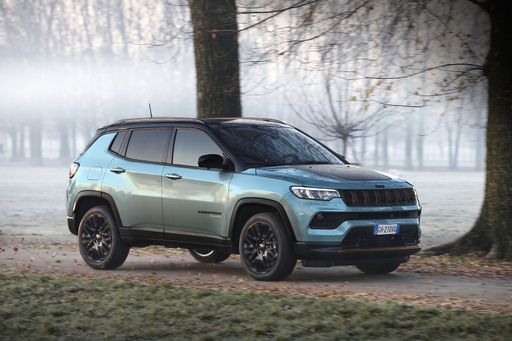
Jeep Compass
Jeep Compass
The Jeep Compass combines a rugged aesthetic with modern sophistication, making it a standout choice in the compact SUV segment. Its robust design is complemented by a comfortable interior that offers ample space and cutting-edge technology for a seamless driving experience. Whether tackling urban environments or venturing off-road, the Compass provides versatility and reliability, embodying the adventurous spirit synonymous with the Jeep brand.
details @ media.stellantis.com
@ media.stellantis.com
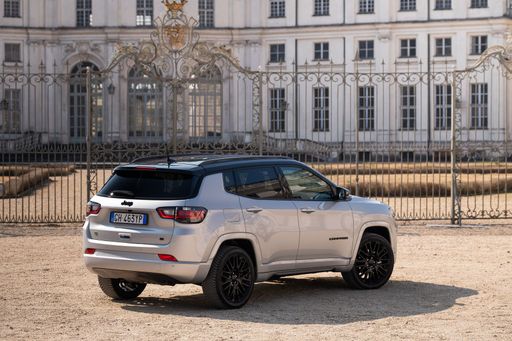 @ media.stellantis.com
@ media.stellantis.com
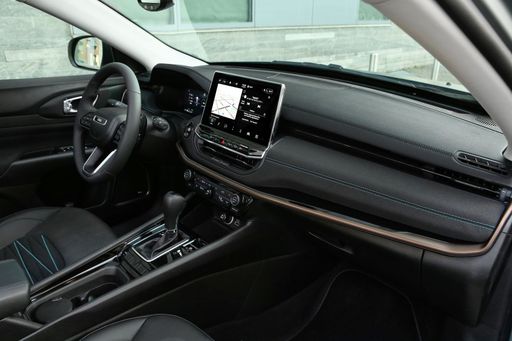 @ media.stellantis.com
@ media.stellantis.com
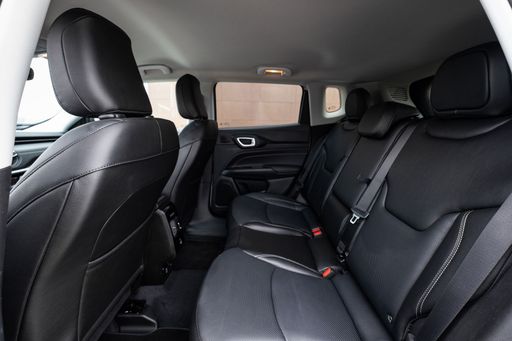 @ media.stellantis.com
@ media.stellantis.com
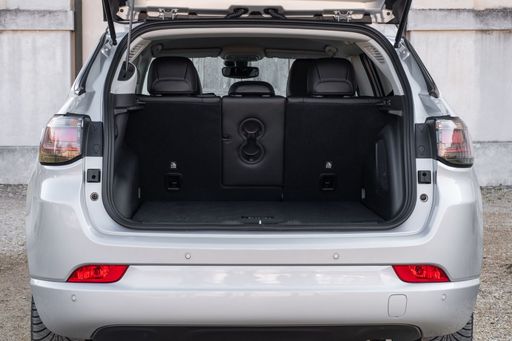 @ media.stellantis.com
@ media.stellantis.com
BYD Seal 6
The BYD Seal 6 is a captivating electric sedan that captures attention with its sleek design and modern aerodynamics. With a strong focus on sustainability, it offers an impressive electric driving experience, combining efficiency with cutting-edge technology. The Seal 6 stands out in the EV market for its luxurious interior and innovative features, making it a strong contender for drivers looking to embrace the future of transportation.
details

|
|
|
|
|
Costs and Consumption |
|
|---|---|
|
Price
34200 - 46900 £
|
Price
36800 - 42800 £
|
|
Consumption L/100km
2 - 5.9 L
|
Consumption L/100km
1.7 - 2.6 L
|
|
Consumption kWh/100km
17.50 kWh
|
Consumption kWh/100km
-
|
|
Electric Range
36 - 500 km
|
Electric Range
50 - 100 km
|
|
Battery Capacity
74 kWh
|
Battery Capacity
-
|
|
co2
0 - 133 g/km
|
co2
38 - 60 g/km
|
|
Fuel tank capacity
36 - 55 L
|
Fuel tank capacity
65 L
|
Dimensions and Body |
|
|---|---|
|
Body Type
SUV
|
Body Type
Estate
|
|
Seats
5
|
Seats
5
|
|
Doors
5
|
Doors
5
|
|
Curb weight
1575 - 2198 kg
|
Curb weight
1710 - 1805 kg
|
|
Trunk capacity
420 - 550 L
|
Trunk capacity
500 L
|
|
Length
4404 - 4552 mm
|
Length
4840 mm
|
|
Width
1819 mm
|
Width
1875 mm
|
|
Height
1629 - 1675 mm
|
Height
1505 mm
|
|
Max trunk capacity
1230 - 1387 L
|
Max trunk capacity
1535 L
|
|
Payload
465 - 470 kg
|
Payload
435 kg
|
Engine and Performance |
|
|---|---|
|
Engine Type
Petrol MHEV, Plugin Hybrid, Electric
|
Engine Type
Plugin Hybrid
|
|
Transmission
Automatic
|
Transmission
Automatic
|
|
Transmission Detail
Dual-Clutch Automatic, Automatic Gearbox, Reduction Gearbox
|
Transmission Detail
CVT
|
|
Drive Type
Front-Wheel Drive, All-Wheel Drive
|
Drive Type
Front-Wheel Drive
|
|
Power HP
130 - 240 HP
|
Power HP
184 - 212 HP
|
|
Acceleration 0-100km/h
7.3 - 10.3 s
|
Acceleration 0-100km/h
8.5 - 8.9 s
|
|
Max Speed
180 - 200 km/h
|
Max Speed
180 km/h
|
|
Torque
230 - 345 Nm
|
Torque
-
|
|
Number of Cylinders
4
|
Number of Cylinders
4
|
|
Power kW
96 - 177 kW
|
Power kW
135 - 156 kW
|
|
Engine capacity
1199 - 1469 cm3
|
Engine capacity
1498 cm3
|
General |
|
|---|---|
|
Model Year
2024 - 2025
|
Model Year
2025
|
|
CO2 Efficiency Class
D, B, A
|
CO2 Efficiency Class
B
|
|
Brand
Jeep
|
Brand
BYD
|
What drivetrain options does the Jeep Compass have?
The Jeep Compass is available as Front-Wheel Drive or All-Wheel Drive.
The prices and data displayed are estimates based on German list prices and may vary by country. This information is not legally binding.
